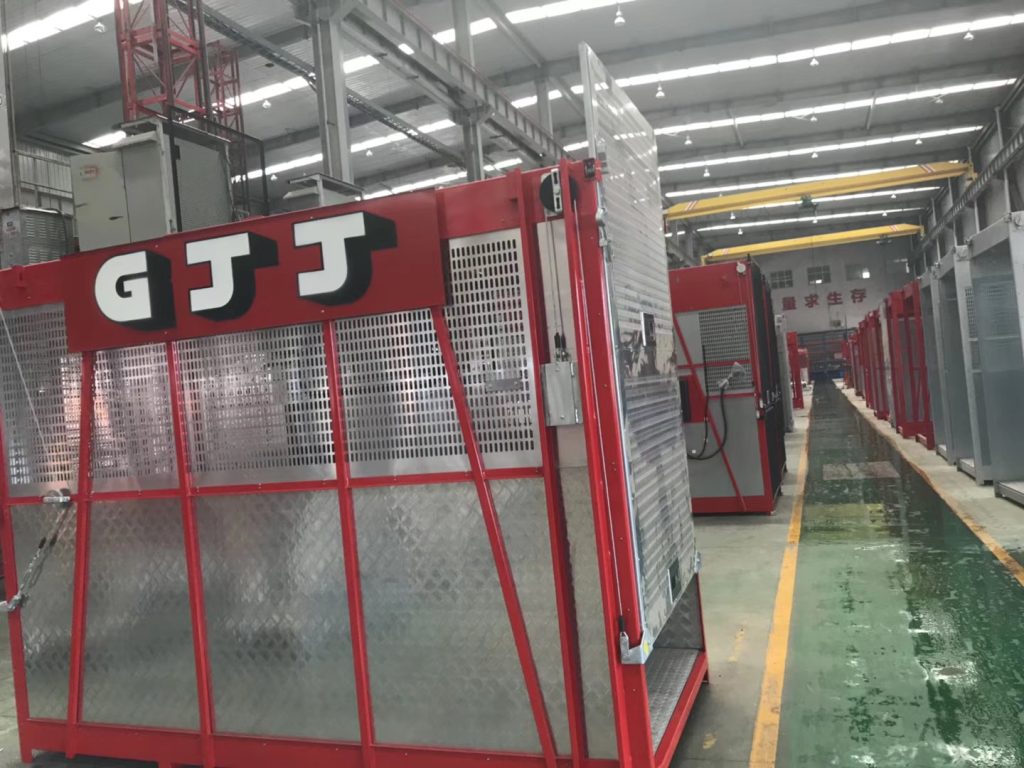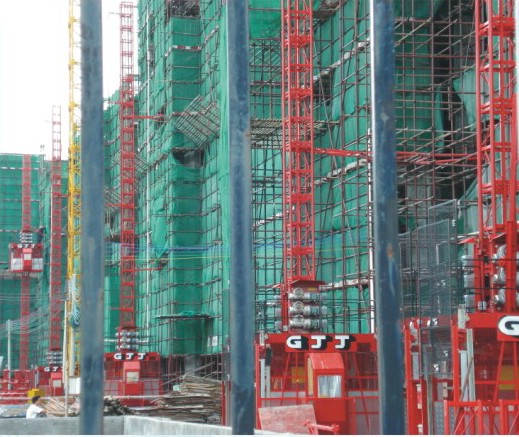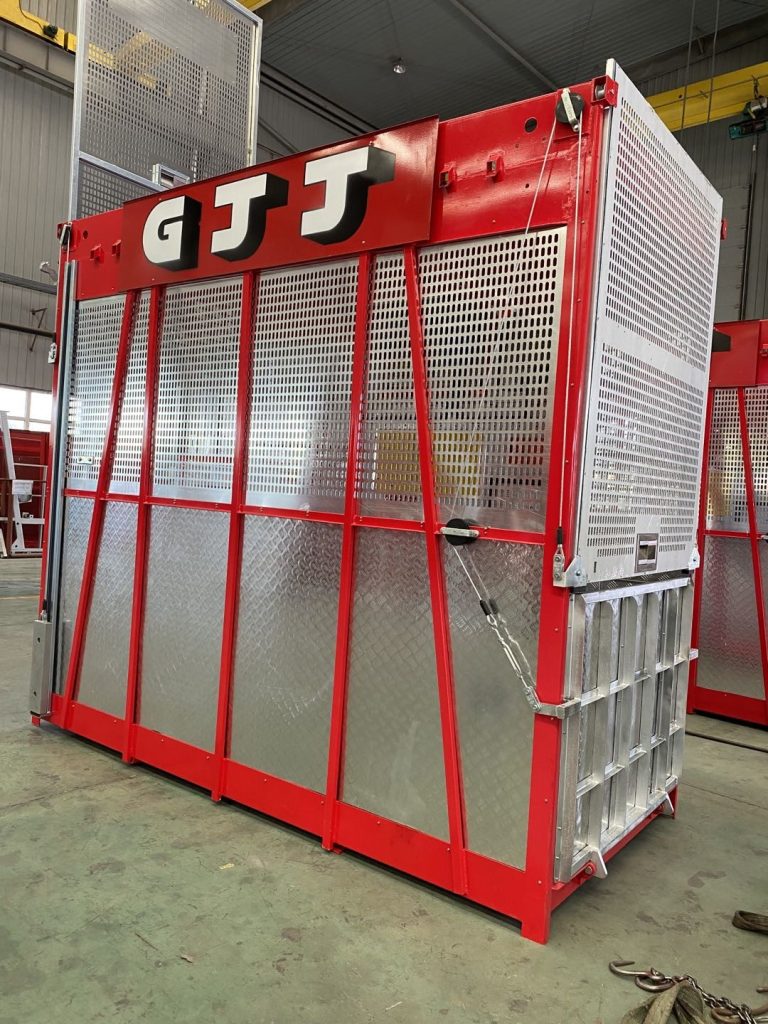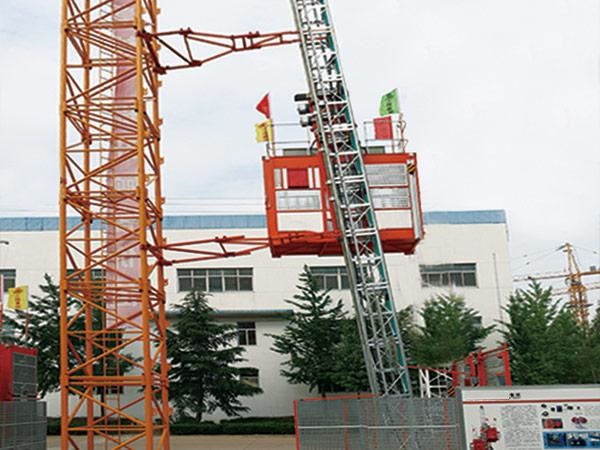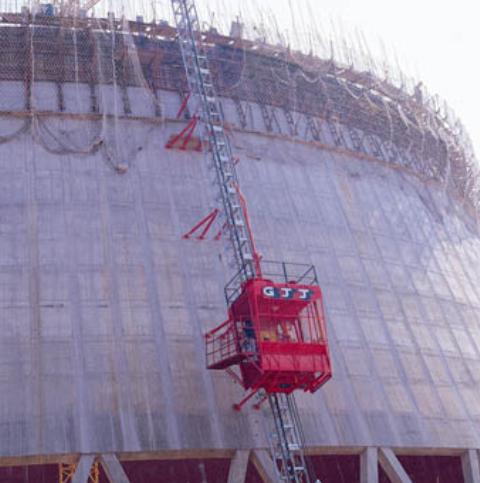In the construction industry, hoist cables—commonly made of steel wire rope—play a crucial role in the vertical transportation of workers, equipment, and materials. These cables are subjected to heavy loads, exposed to harsh environments, and serve as the core safety element in construction hoists. As such, their integrity is directly tied to jobsite safety and operational continuity.
When it comes to replacement, there is no universal, one-size-fits-all schedule. Although manufacturers typically recommend a maximum service life—often between 12 to 24 months—the actual replacement timeline should be based on a combination of factors, including:
- Usage intensity and operating frequency
- Physical condition and visible wear
- Environmental exposure (e.g., moisture, corrosion, dust)
- Load behavior and lifting performance
In some cases, cables may need to be replaced well before the recommended service limit, especially if inspection reveals signs of fatigue, damage, or abnormal operation. Regular assessments are key to preventing failure before it happens.
What Is the Role of Construction Hoist Cables?
Construction hoist cables are multi-strand steel ropes designed for high tensile strength, flexibility, and fatigue resistance. In a hoisting system, its core functions include:
| Function | Description |
| Load Bearing | Supports the full weight of the lift cage and its contents. |
| Motion Transmission | Transfers force from the motor to enable upward/downward movement. |
| Operational Stability | Maintains balance and minimizes swing during movement. |
| Safety Mechanism Integration | Interacts with limit switches and emergency brakes when faults occur. |
By ensuring smooth and secure lifting, hoist cables play a critical role in protecting lives, equipment, and project timelines.
How Do You Know It’s Time? Key Factors That Influence Construction Hoist Cable Replacement
Determines the Right Timing
To help identify when a cable should be replaced, the following dimensions offer a comprehensive and practical evaluation method:
- Usage Period & Workload Intensity
- Heavy use accelerates fatigue. Cables in continuous use under high loads should be inspected more frequently than those in intermittent, light-duty applications.
| Indicator | Action |
| Over 12 months of service | Begin detailed inspections |
| High-frequency or over-capacity use | Shorten inspection/replacement intervals |
Visual Wear: Broken Wires, Corrosion, Flattening
Physical damage is the most common and immediate reason for replacement. Signs such as broken strands, rust, abrasion, or structural distortion indicate compromised cable integrity.
| Symptom | What It Means | Suggested Action |
| Localized broken wires | Excessive stress or fatigue | Replace immediately |
| Surface rust or internal corrosion | Loss of material strength | Evaluate for early failure |
| Deformation (bird-caging, kinks) | Structural damage from poor winding/load | Replace without delay |
Lubrication Failure & Internal Fatigue
Steel ropes require proper lubrication to minimize internal friction and protect against corrosion. Lack of lubrication can accelerate unseen fatigue inside the rope core.
| Symptom | Implication | Action |
| Dry surface or squeaking | Lubrication loss | Re-lubricate and monitor closely |
| Internal crackling feel | Hidden fatigue or core corrosion | Disassemble and inspect internally |
Load Irregularities and Pull Testing
If the hoist appears to strain under typical loads or move unevenly, the cable’s elasticity or strength may have deteriorated.
| Situation | Potential Cause | Recommendation |
| Uneven lifting or sagging | Loss of cable tension or stretch fatigue | Conduct load test |
| Excessive elongation under weight | Metal fatigue inside strands | Replace if elongation is 5–10% |
Anchor Point Condition
The ends of the cable—where they are anchored to the hoisting drum or cage—are high-stress zones. Failures here can be catastrophic.
| Symptom | Risk Involved | Next Step |
| Fraying near anchor points | Slippage or end cap failure | Re-terminate or replace |
| Loose clamps or wedges | Improper load transfer | Secure or inspect fully |
Operating Environment
Cables exposed to extreme conditions such as humidity, coastal air, concrete dust, or temperature swings degrade faster.
| Environmental Factor | Effect on Cable | Recommendation |
| High humidity/salty air | Accelerated corrosion | Inspect every 3 months |
| Dusty or acidic conditions | Contamination of strands and lubricant | Clean/lubricate frequently |
| Temperature extremes | Changes in tension or brittleness | Use weather-rated cables |
Installation & Spooling Quality
Improper spooling or mismatched drum grooves can lead to abnormal wear. Poor installation accelerates localized damage, shortening cable life.
| Observation | Likely Impact | Prevention |
| Crossed or overlapped winding | Uneven wear, crushing | Use guided spooling systems |
| Groove mismatch with cable | Strand flattening or jamming | Match the cable diameter with the drum |
History of Failures or Frequent Repairs
Cables that have required frequent adjustments or replacements often point to systemic problems, such as improper usage or equipment design flaws.
| Pattern | Implication | Action |
| Multiple breakages in short time | Poor installation or overload | Reassess usage & maintenance |
| Same failure point recurring | Equipment defect or misalignment | Redesign or recalibrate |
How Often Should Construction Hoist Cables Be Replaced?
To consolidate everything into a practical overview, the matrix below can serve as a quick-reference guide for decision-making:
| Dimension | Replace If… |
| Usage Duration | >12 months under normal use; sooner for high-frequency lifting |
| Physical Damage | Visible wire breaks, rust, deformation, or kinking |
| Lubrication Condition | Completely dry, cracking sounds, internal stiffness |
| Performance Issues | Load sag, noisy operation, jerky motion |
| Anchor Point Status | Frayed ends, loose clamps, visible slipping |
| Environment | Corrosive, wet, dusty, or temperature-variant locations |
| Installation Quality | Poor spooling, mismatched grooves |
| Maintenance Records | Frequent fixes, repeating damage zones |
Construction hoist cables are not just structural components—they are active safety mechanisms. Waiting for a visible break is already too late. A proactive inspection and replacement strategy, based on these operational dimensions, ensures not only compliance with safety regulations but also the protection of your workforce and project timeline.
For site supervisors or safety managers, consider developing a maintenance logbook that includes inspection intervals, observations, and replacement dates. Digital tracking tools and QR-coded asset logs can also help automate this process.
Construction Hoist for Sale
From the time of our founding in 2006, CPTC – Chongqing Clipper Industry Co., Ltd. Of China has focused exclusively on the Construction engineering equipment and spare parts. Including complete construction hoist, tower crane, gondola and spare parts. We are supplying spare parts of GJJ, ZENIT, HERCULES, ORBIT, CREDO, LIFTEC, VERTILIFT, A.T.L., BAODA, ZOOMLION, XCMG, SANY and so on. Our products including, GEAR RACK, PINON, SAFETY DEVICE, MOTOR, GEARBOX, ROLLER, MASTER SECTION, TIE IN, CABLE, LIMIT SWITCH, FIXING AGNLE, BOLT, SLEWING RING, INVERTER…. We have developed a unique expertise and knowledge of our products. Our technical knowledge and foundational support, combined with the high quality of our product, has made CPTC one of the most successful in the construction equipment industry.

